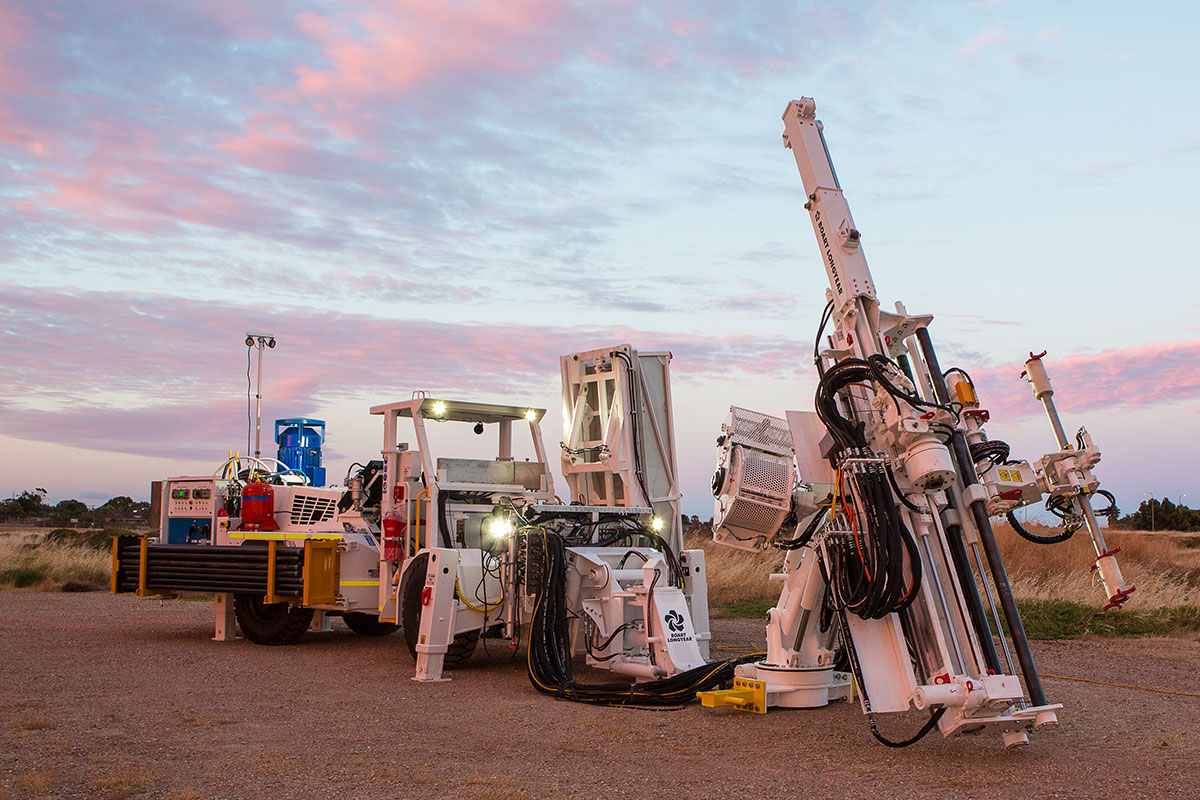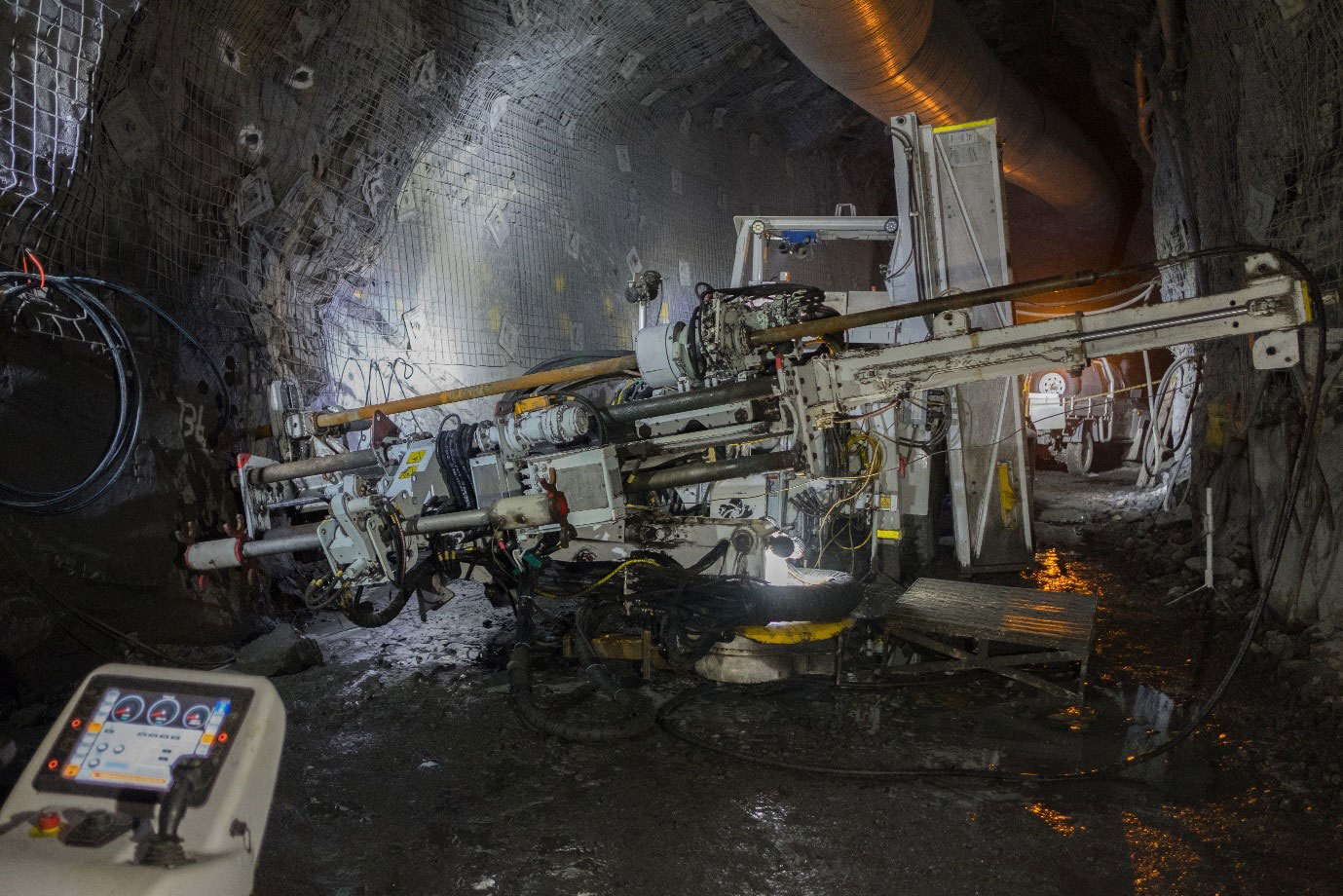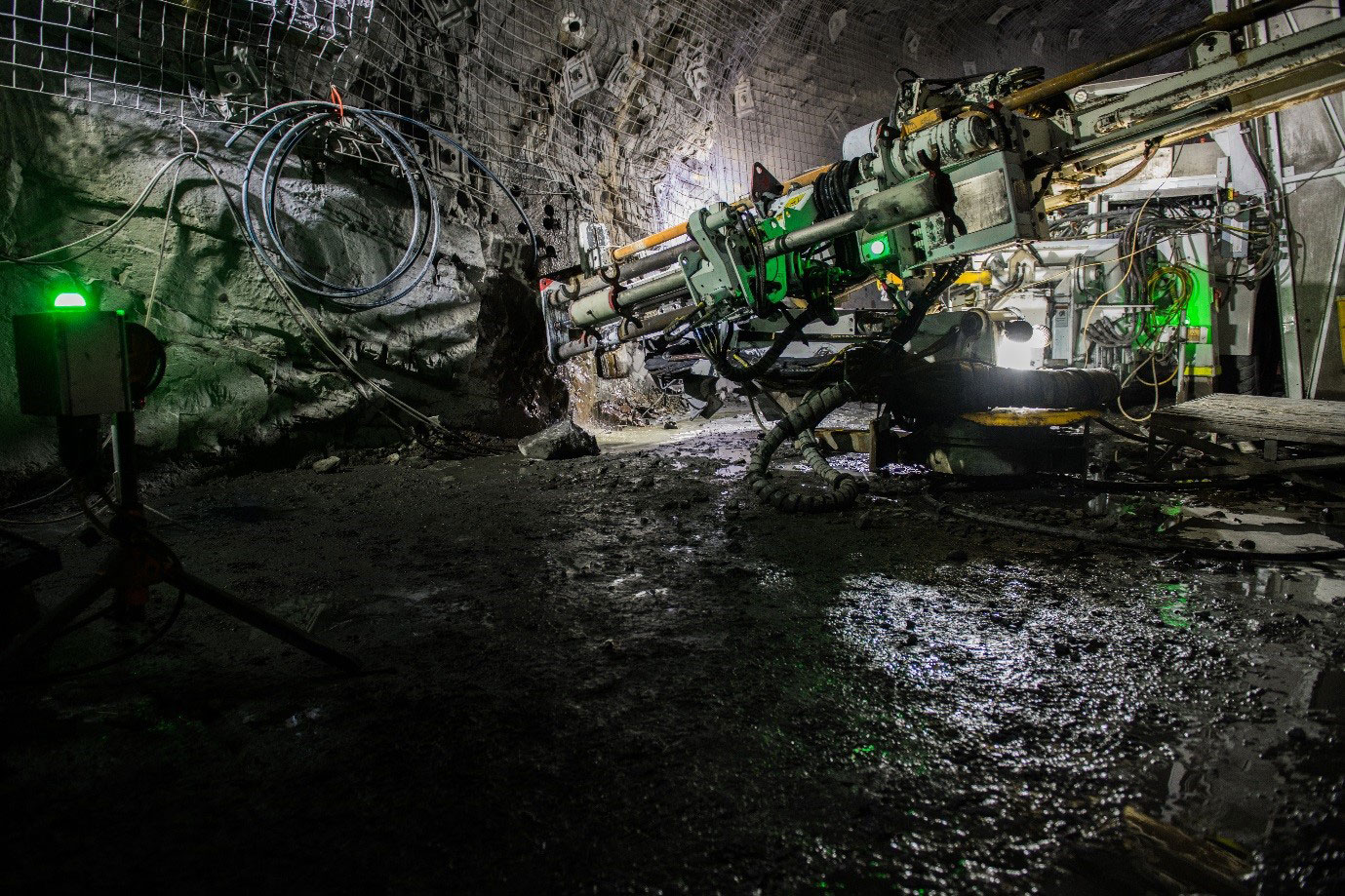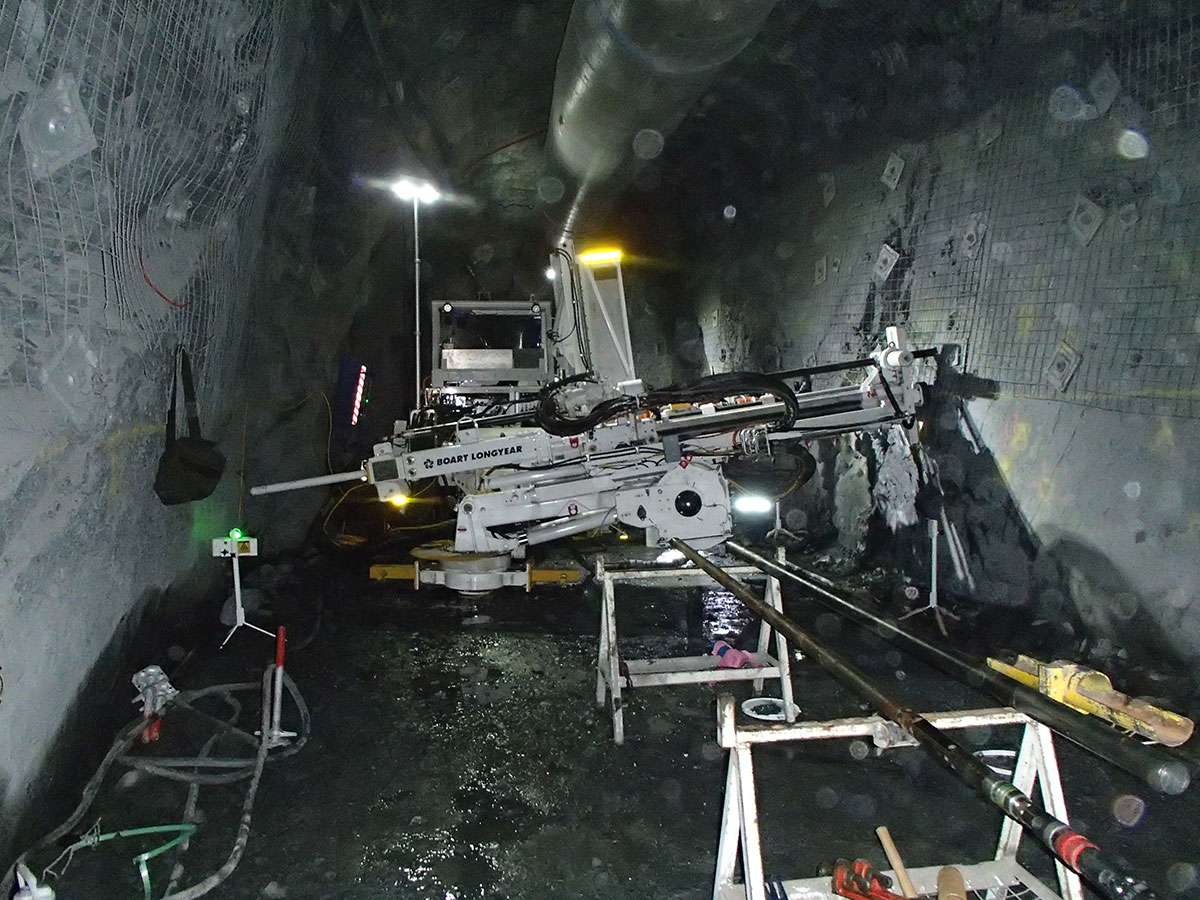EXPLORACIÓN
agosto 22, 2018
Cómo los servicios de perforación están logrando dos metros adicionales por hora
MDR500
Este artículo apareció originalmente en la revista GeoDrilling Internacional, Edición de octubre de 2018, páginas 16-17.
El MDR500 es un equipo móvil de perforación subterránea con diamantina diseñado exclusivamente para los servicios de perforación de Boart Longyear ™. Utiliza la nueva interfaz de control y potencia de LMi y viene equipada con capacidad para almacenar 500 m de barras a bordo (barras NQ), lo que la convierte en una plataforma de perforación móvil autosuficiente.
La MDR500 fue una idea original alimentada por largo tiempo por Geoff Moroney (Gerente de Activos y Flotas de Servicios de Perforación para la región Asia Pacífico) y John Kirkwood (Director Regional de Servicios de Perforación para Asia Pacífico). El proyecto recibió el visto bueno en el tercer trimestre de 2016 después de que las investigaciones de mercado indicaron que había en algunas áreas del mercado australiano surgía la necesidad de una perforadora de diamante subterránea de profundidad media que fuera en su mayor parte autosuficiente y pudiera pasar rápidamente de un orificio al otro. El diseño del concepto comenzó a principios de diciembre de 2016 y el primer equipo terminado salió del taller a principios de diciembre de 2017.
La base de la idea era convertir los MDR150 existentes en la flota australiana en MDR500. El MDR150 original fue diseñado y construido por Geoff Moroney y Nathan Kaesler (ahora Gerente de Ingeniería de I + D Global) casi 10 años antes, cuando Geoff trabajaba en herramientas y Nathan era un nuevo y entusiasta ingeniero en Boart Longyear. El MDR150 consiste en una unidad de alimentación de 75kw y una estructura de avance de la rápida Serie 400 montadas en la pluma telescópica de un portador Normet muy sólido y además con una capacidad de almacenamiento a bordo de 144m de barras. Es perfecto para trabajar agujeros rápidos y cortos en sitios donde se permite el manejo manual de barras en la sarta de perforación. El MDR500 satisface la creciente demanda en el mercado de una plataforma móvil para agujeros más profundos combinados con una tendencia cada vez mayor a reducir la manipulación manual. Eso junto con el hecho de que el MDR150 tiene casi 10 años de existencia y la mayoría de las unidades necesita una reconstrucción mayor y donde varios de los componentes clave del sistema de control están obsoletos, hace que la conversión de estos MDR150 en nuevos MDR500 tenga sentido.
Con el proyecto coincidiendo con las primeras pruebas de prototipo de la nueva plataforma de alimentación subterránea LMi, fue una decisión fácil para el grupo de diseño elegir el nuevo diseño de 110kW LMi para alimentar y controlar el taladro. Este nuevo diseño consiste en un cabezal de perforación de alta velocidad Boart Longyear HQ montado en una estructura de avance de la serie 700 que utiliza un manipulador de barra subterránea estándar. Una vez que se decidió el concepto básico, el proyecto se transformó en una compleja tarea para el equipo de Ingeniería de Servicios de Perforación de Asia Pacífico, encontrar la forma de calzar todos los componentes del LMi junto con los 500m de barras en el transportador y luego diseñar un brazo que pudiera sostener una barrena mucho más pesada en la parte frontal del equipo y permitir además una horizontal de 360° y ángulos de perforación por sobre 90° y hasta -90°.
Un concepto innovador de Stewart Jones que permite que la barra frontal se asiente sobre el eje delantero durante el tránsito y luego se incline en una configuración vertical a cada lado del equipo durante el uso, lo que permite un manejo ergonómico de la barra resultó ser una ventaja adicional en el camino. Sin duda, el proyecto no estuvo exento de desafíos con el fortalecimiento del chasis Normet y la necesidad de un eje delantero más grande para soportar la carga sustancialmente más pesada que ahora lleva la parte delantera de la máquina.
El apretado cronograma del proyecto significó que el diseño y la construcción tuvieran que realizarse simultáneamente con el trabajo del personal del taller, todo bajo la dirección del instalador líder del proyecto, Darren Watson, quien hizo un excelente trabajo al construir y ensamblar el primer equipo a pesar de tener sólo diseños a medio terminar y dibujos parciales al comienzo. El diseño del recorrido de las mangueras para el MDR500 fue una tarea monumental debido a la cantidad de movimiento requerido desde el brazo. El equipo de trabajo del taller fue fundamental en el diseño y construcción. Gran parte del diseño fue realizado en el taller sobre el equipo mismo.
Como el trabajo pesado por parte del equipo de mecánicos estaba a punto de completarse, la dirección del diseño quedaba ahora en manos de Bernie Chia y Glen Verrall, en ese entonces encargados de ingeniería eléctrica y sistemas de control de productos, quienes debían lograr que este equipo de perforación cobrara vida con todo su sistema de control, tanto de las funciones de configuración como del taladro manejado a través de la interfaz de pantalla táctil en la cabina del operador o desde el panel de control electrónico LMi. Glen hizo su magia para entrelazar las funciones adicionales de MDR sin problemas en una versión modificada del software LMi.
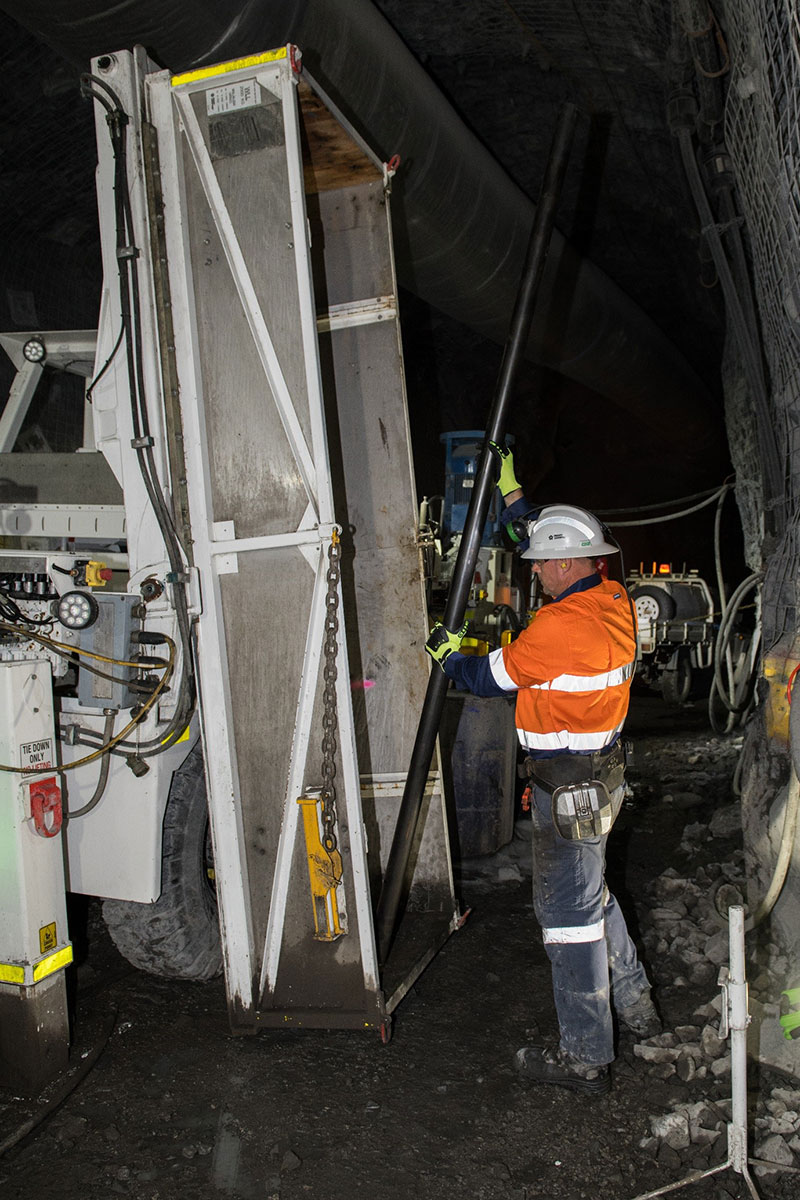
Durante todo el proyecto, el equipo de ingeniería estuvo en estrecho contacto con los usuarios finales en terreno, principalmente Matt Barnes, quien dirige el equipo de operaciones en MMG Dugald River Mine en Queensland, donde se desplegaron los dos primeros MDR500. Esta colaboración se produjo en todas las fases del proyecto, comenzando con un viaje del equipo del proyecto de ingeniería para determinar los requerimientos con Matt y su grupo de trabajo, a fin de garantizar que el resultado final los cumpliera exactamente. La participación del grupo de trabajo continuó hasta el final del proceso, siendo Matt un valiosísimo experto en la materia y un participante clave en las revisiones de diseño y evaluaciones de riesgos. El proyecto se cerró con una visita de la ingeniería al sitio a principios de enero de 2018 y nuevamente en marzo, coincidiendo con el despliegue operativo de cada uno de los MDR500 en Dugald River. El objetivo principal de estas visitas era capacitar a los operadores sobre las características del nuevo equipo de perforación y estar a su disposición para solucionar inmediatamente cualquier problema que pudiera surgir. Afortunadamente, no se presentó ninguno importante y Glen pudo aprovechar las visitas a terreno como una valiosa fuente de comentarios de los perforadores para un mayor desarrollo del software LMi.
El primer MDR500 llegó al lugar y, después de pasar por las inspecciones de rutina, se dirigió directamente a su primer agujero sin problemas. Esto se debió en gran parte a las importantes contribuciones del equipo de operaciones durante todo el proyecto y a la rápida adopción del nuevo equipo de perforación por parte de los perforadores. Los perforadores de Dugald River se adaptaron rápidamente al nuevo sistema de control LMi de la MDR500 y su nivel de aceptación de la interfaz ha sido muy positiva. El equipo de Dugald River superó rápidamente los resultados en metros obtenidos con los MDR150 anteriores y ahora promedian la impresionante cantidad de 2 metros adicionales por hora.
Un tercer MDR500 está a punto de terminarse en el Taller de Adelaida y, cuando esté listo, será un gran incentivo para la ejecución de nuevos trabajos en varios sitios potenciales que se están analizando actualmente. Si la demanda del mercado sigue siendo fuerte, la intención es convertir la flota de los 8 MDR150 restantes en MDR500 en los próximos años con la posibilidad de contratar operadores adicionales para avanzar aún más si es necesario.
El MDR500 ha sido y sigue siendo un éxito en terreno y un punto clave de interés para el equipo de Asia Pacific Drilling Services en la negociación de contratos de perforación subterránea. El éxito del proyecto fue obviamente el resultado de un gran esfuerzo, pero también el excelente trabajo en equipo y el espíritu de colaboración demostrado por los diversos grupos funcionales de Boart Longyear que participaron, sumando todos muchas más personas de las que podrían mencionarse aquí y que han jugado un papel importante en el proyecto .
Obtenga más información acerca de las capacidades de los Servicios de Extracción de Testigos Subterráneos
APRENDA MÁS


